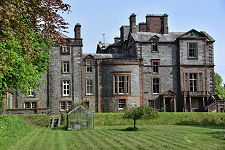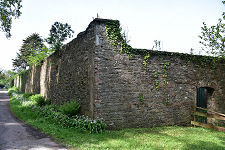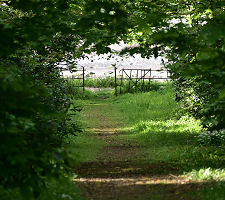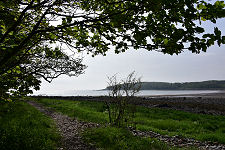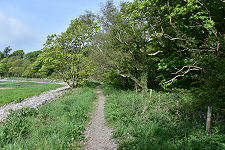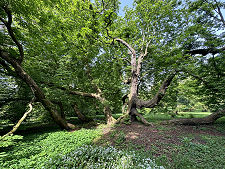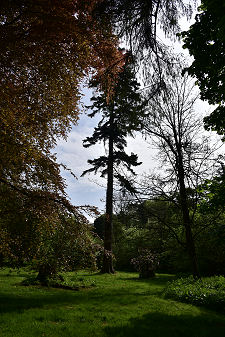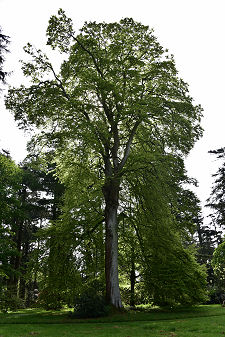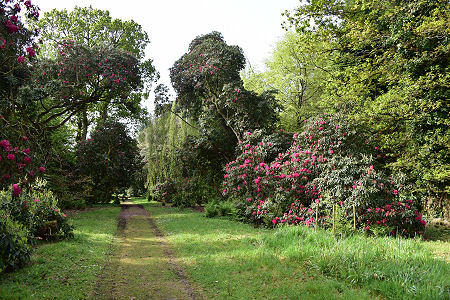 Galloway House Gardens |
Galloway House Gardens comprise over 50 acres of designed parkland occupying a sheltered position on the west side of Wigtown Bay, with Rigg Bay to the south. Immediately to the north of the gardens is the magnificent Galloway House, which is privately owned and not open to the public. There is also an almost six-acre walled garden, though at the time of our visit this was closed for ongoing restoration work to the glasshouses.
The gardens are accessed using the estate road that heads south from the crossroads on the west edge of Garlieston, near the village petrol station and shop. From here you make your way for nearly a mile, past the estate's Home Farm and take a slight right turn that follows the road some distance from the west frontage of Galloway House. Your destination is the fenced car park south-west of Galloway House, which is pay and display and operated by the charity that runs and maintains the gardens. While parking is charged for, access to the gardens themselves is not. We'd offer the suggestion that before you leave the car park, you take a photo of the displayed garden map with your phone to refer to during your visit.
If you are looking for calm and tranquility then you have come to the right place. The gardens are obviously the result of centuries of management and continue to be beautifully maintained. But you get the sense that the guiding principle is one of a light touch. These are not intensively manicured gardens. Instead you get informal woodland areas with paths and tracks leading through them. (Continues below images...)
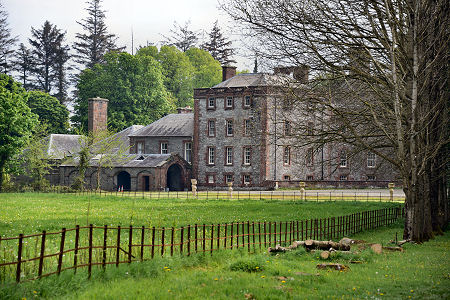 A Glimpse of Galloway House from the Gardens |
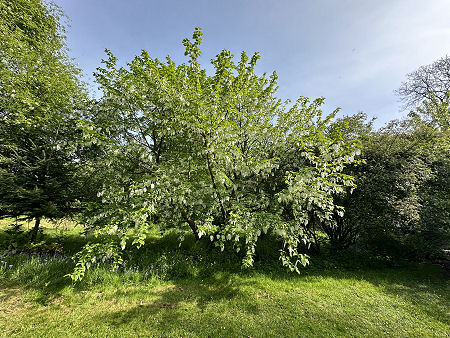 The Handkerchief Tree |
As their own website puts it: "The gardens offer a fascinating network of formal garden paths and informal natural woodland walks taking in a wide range of scenery and incorporating a variety of interesting plants from wild flowers and shrubs to magnificent old trees, including many exotic species that benefit from an unusually mild climate owing to the Gulf Stream." Despite the map, we were surprised to find ourselves emerging from the gardens onto the shore of Rigg Bay, and area in which, at low tide, it is still possible to see relics of work during World War Two to develop what today might be called pop-up harbours for D-Day. One of the botanical highlights is not far away, a mature Handkerchief Tree (Davidia involucrata) that flowers in late spring.
As already noted, Galloway House is a private residence. But it provides a backdrop to the northern end of the gardens and has a fascinating story. The house was begun in 1740 for Lord Garlies, later the 6th Earl of Galloway, to designs by the architect John Douglas. Additions were made in 1841 from designs by the Edinburgh architect William Burn. During World War Two, Galloway House served as an auxiliary hospital. After the war it became a school, before passing back into private ownership in 1976. The current owner is overseeing a mammoth restoration project intended to return Galloway House to its former glory.
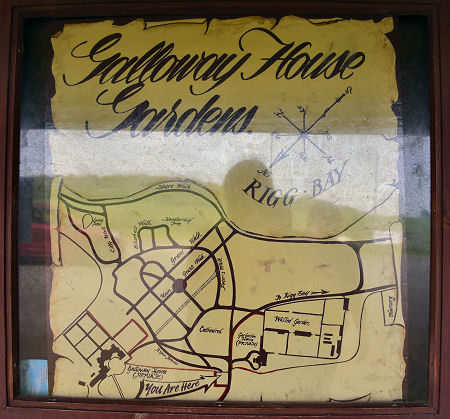 Map of the Gardens in the Car Park |

|
|
|
Visitor InformationView Location on MapGarlieston, DG8 8HF. info@ gallowayhousegardens.co.uk Grid Ref: NX 478 452 gallowayhousegardens.co.uk What3Words Location: ///dignitary.picture.lights |
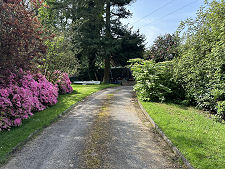 Road Through the Gardens |
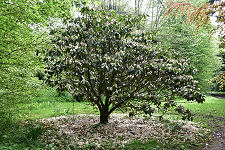 A Flowering Tree |
 Red Rhododendrons |
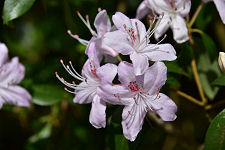 Pink Rhododendrons |
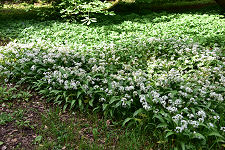 Wild Garlic |
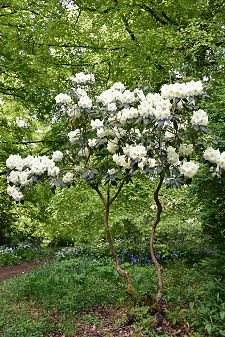 White Rhododendrons |
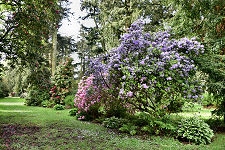 Rhododendron Bushes |
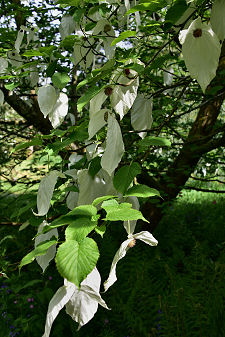 Handkerchief Tree |
